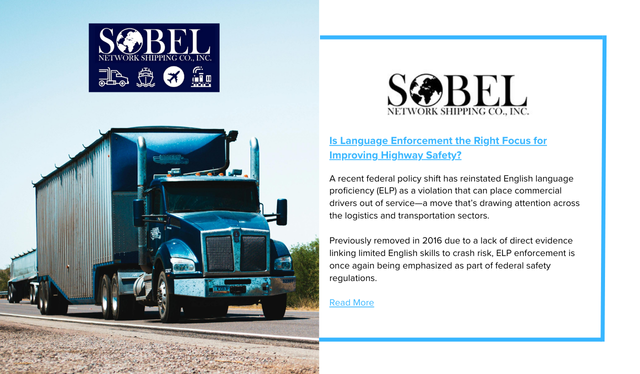A recent federal policy shift has reinstated English language proficiency (ELP) as a violation that can place commercial drivers out of service—a move that’s drawing attention across the logistics and transportation sectors.
Previously removed in 2016 due to a lack of direct evidence linking limited English skills to crash risk, ELP enforcement is once again being emphasized as part of federal safety regulations. While the aim is to ensure driver qualification and regulatory understanding, industry data suggests the impact of ELP on overall highway safety may be overstated.
Examining the Data on ELP Violations
According to carrier data over the past two years, approximately 15,000 ELP violations were reported, concentrated in border states and metro freight hubs. However, historical trends show a sharp decline in these citations since 2014, largely due to previous guidance that allowed enforcement officers to accept translation aids such as cue cards, apps, and interpreters.
These tools, now potentially limited under the new policy, had helped carriers with multilingual workforces remain compliant without compromising safety.
Interestingly, ELP violations have not been shown to be significant predictors of crash risk. Nearly 40% of violations involved intrastate operators, with no direct connection to crash rates. Many violations stemmed from regulatory misunderstandings, not reckless or impaired driving.
Where the Real Safety Risks Lie
Multiple studies and enforcement reports point to other factors as far more serious threats to road safety. The top driver-related out-of-service violations include:
-
Hours-of-Service (HOS) violations
-
Fatigued driving and falsified logs
-
Expired or invalid commercial licenses
-
Drug and alcohol infractions
Crash predictor analyses confirm that aggressive driving behaviors, previous crash history, and improper lane changes are far more likely to forecast future collisions than language barriers.
In fact, the most recent crash predictor report found:
-
Reckless driving violations increase crash risk by 114%
-
Improper signaling raises risk by 89%
-
Past crash history leads to an 88% increase in crash likelihood
These findings indicate that enforcement resources may be more effective when focused on behaviors with proven links to safety outcomes.
Industry Enforcement Priorities
Regulatory agencies have made significant strides in other areas, particularly through the Drug & Alcohol Clearinghouse and electronic logging device (ELD) mandates. These programs are directly reducing impaired driving and logbook violations—both key contributors to commercial vehicle accidents.
Additionally, agencies are working to expand compliance reviews across a vast carrier population, over 90% of which currently lack a safety rating. With limited resources, focusing on data-backed enforcement priorities is crucial.
Balancing Compliance and Practicality
Although language barriers may contribute to compliance misunderstandings, there’s little evidence that they alone increase crash risk. Many carriers benefit from education, multilingual support, and targeted training to improve safety without restricting operations.
Experts argue that revisiting the blanket classification of ELP as an out-of-service offense may deter legitimate operators and create unnecessary logistical strain—especially when alternative solutions exist.


